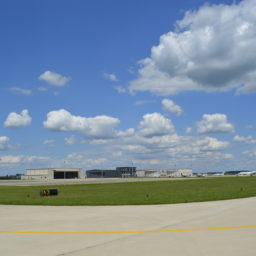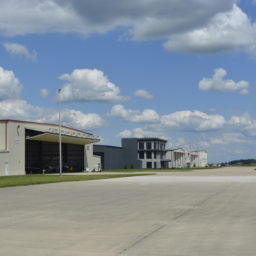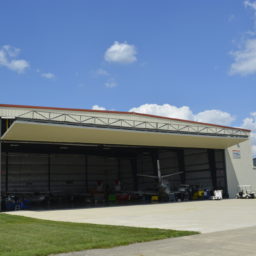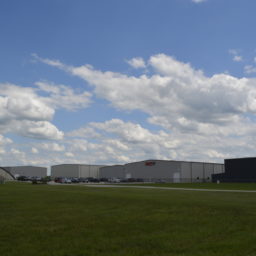MQJ Sustainable Airport Master Plan
Airport Background
The Indianapolis Regional Airport, originally named Mount Comfort Airport, (hereafter referred to by its FAA identifier MQJ or the Airport) is owned and operated by the Indianapolis Airport Authority (IAA). Located on 1,805 acres in Greenfield, Indiana, it is 14 miles from downtown Indianapolis with convenient access to both the entertainment and sports venues in downtown Indianapolis, as well as nearby access to the Indianapolis Motor Speedway.
With over a forty-year history serving the Indianapolis region, the Airport opened on November 6, 1977. The Airport has two paved runways: the 6,005 foot asphalt Runway 7/25 equipped and marked for a precision approach; and a 3,902 foot concrete crosswind Runway 16/34. As a general aviation airport, MQJ serves both corporate businesses and private pilots.
What is a Sustainable Airport Master Plan?
The Sustainable Airport Master Plan for MQJ will provide a set of documents to guide the Airport’s development over the next 20 years and beyond. The process will ensure the long-term viability of the Airport, the community, and the natural environment in a way that continues to support economic development and prosperity.
Sustainability at the Indianapolis Regional Airport
The IAA is committed to the long-term sustainability and resilience of its airports. The MQJ Sustainable Master Plan Study incorporates traditional master planning elements and emphasizes the value the IAA places on sustainability. The SMP considers sustainable development that prioritizes economic vitality, operational efficiency, natural resources conservation and social responsibility or "EONS". Focus areas based on EONS are tailored and aligned with the development needs and operations at MQJ while also aligning with IAA’s systemwide sustainability and resilience goals. The SMP allows the IAA to identify opportunities to implement social and environmental initiatives consistent with on-going development plans, thereby increasing the operational efficiency and economic viability of the Airport's development.

Implementing Airport Development Sustainably
Through on-going collaboration and engagement, the IAA solicited input from IAA and tenant personnel, and community stakeholders to help guide the development of a Sustainability Mission Statement for MQJ and the identification of eight sustainability focus areas.
Mission Statement:
“We are committed to creating sustainable aviation for our community by supporting safe and efficient general aviation services and investing in our infrastructure. We will work to balance the needs of our airport with the needs of our community to ensure that we continue to grow in a responsible and sustainable way.”
Future development at MQJ will be conducted in a manner that aligns with the MQJ Sustainability Mission and overall EONS priorities. The focus areas presented below provide consistent metrics to track and report success in achieving sustainability at MQJ and confirming alignment with IAA sustainability and resilience goals.

Recommended Development Plan
Currently under development, the recommended development program will satisfy aviation demand and be compatible with the environment, community development, and other transportation modes. Above all else, the plan will be technically sound, practical, economically feasible, and sustainable.
For any questions, please contact mqjmasterplan@ind.com.








